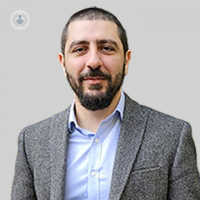SDR Surgery (Selective Dorsal Rhizotomy)
Mr Bassel Zebian - Neurosurgery
Created on: 09-17-2021
Updated on: 11-08-2023
Edited by: Kate Forristal
What is selective dorsal rhizotomy (SDR)?
Selective Dorsal Rhizotomy (SDR) is a surgical procedure primarily used to reduce spasticity in individuals, commonly children, with conditions such as cerebral palsy. The procedure involves the precise identification and selective cutting of problematic sensory nerve roots in the lower spinal cord to reduce muscle stiffness and spasticity.

Who should consider SDR?
Individuals diagnosed with conditions causing significant muscle spasticity, particularly cerebral palsy or related disorders, who have not responded adequately to conservative treatments such as physical therapy, medications, or orthotics, could consider SDR. Candidates typically experience severe spasticity that significantly impacts their quality of life and mobility.
SDR versus other spasticity treatments
Compared to other spasticity treatments such as medications, injections, or physical therapy, SDR offers a more permanent reduction in spasticity. Unlike treatments that require ongoing applications, SDR aims to provide lasting relief by targeting the nerves causing spasticity directly.
How is SDR done?
During SDR, a neurosurgeon makes an incision in the lower back, accessing the spinal cord. Using electrophysiological testing, they identify and selectively cut specific sensory nerve roots causing spasticity while preserving those crucial for normal muscle function. The goal is to reduce spasticity without causing paralysis.
What to expect at the hospital
After SDR surgery, patients generally spend several days in the hospital for post-operative care. This involves managing pain, monitoring initial recovery, and assessing for any complications. Physical therapists may initiate gentle exercises and mobility training during the hospital stay.
Follow-up care and physical therapy
Post-surgery, a comprehensive rehabilitation program is essential. Physical therapy is a crucial aspect of recovery, focusing on strengthening, improving mobility, and retraining muscles. Continued physical therapy and rehabilitation at home or in a specialised facility may be required for an extended period after discharge.
What are the benefits of SDR?
The primary benefit of SDR is a significant reduction in spasticity, leading to improved mobility, gait, and functional abilities. Many patients experience increased independence in daily activities, enhanced quality of life, and reduced reliance on assistive devices.
What are the risks of SDR?
Risks associated with SDR surgery include potential nerve damage, spinal fluid leaks, infections, and in rare cases, loss of motor function. The severity and likelihood of complications vary from patient to patient, and discussions with the medical team are essential to understand individual risk factors.
